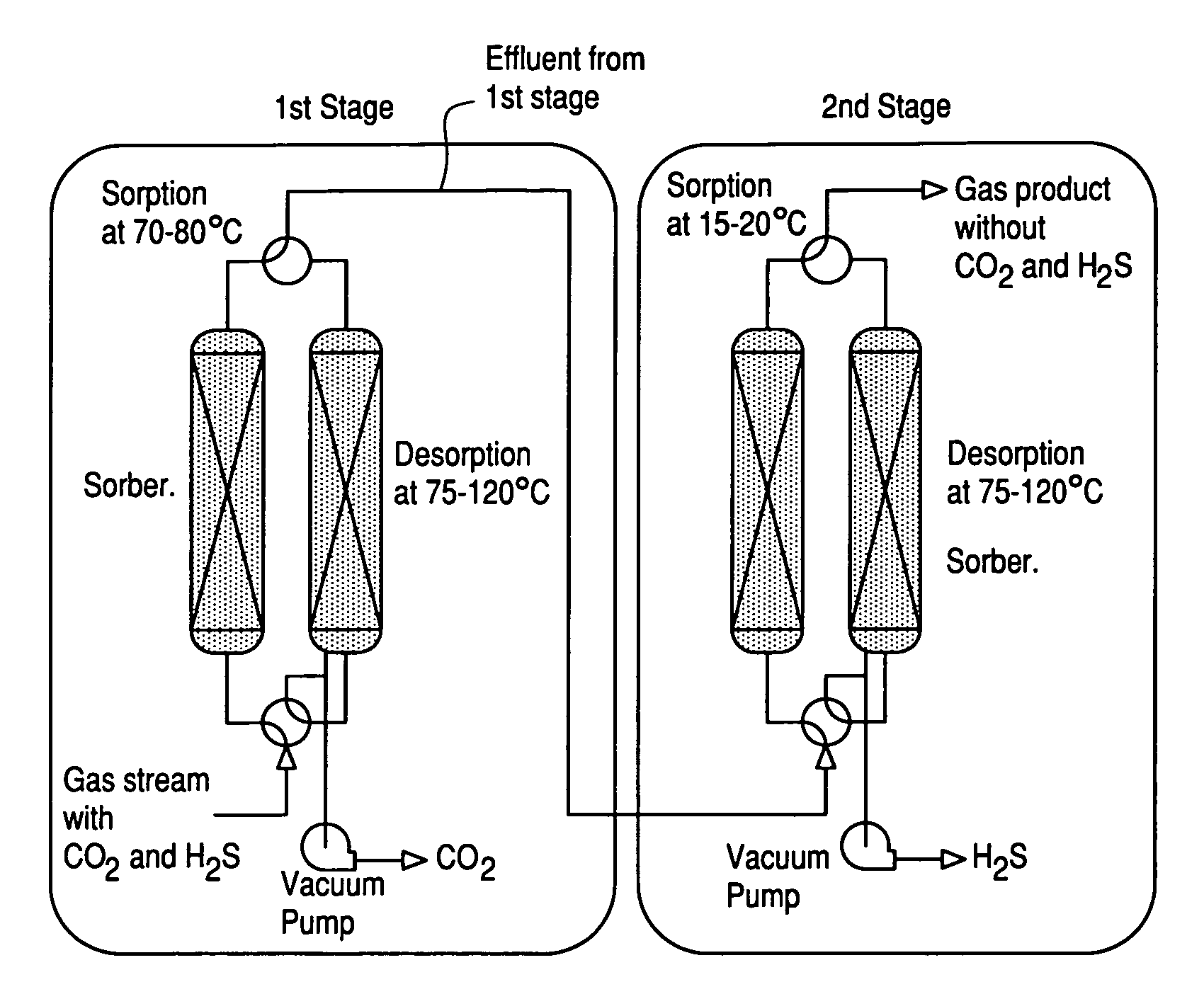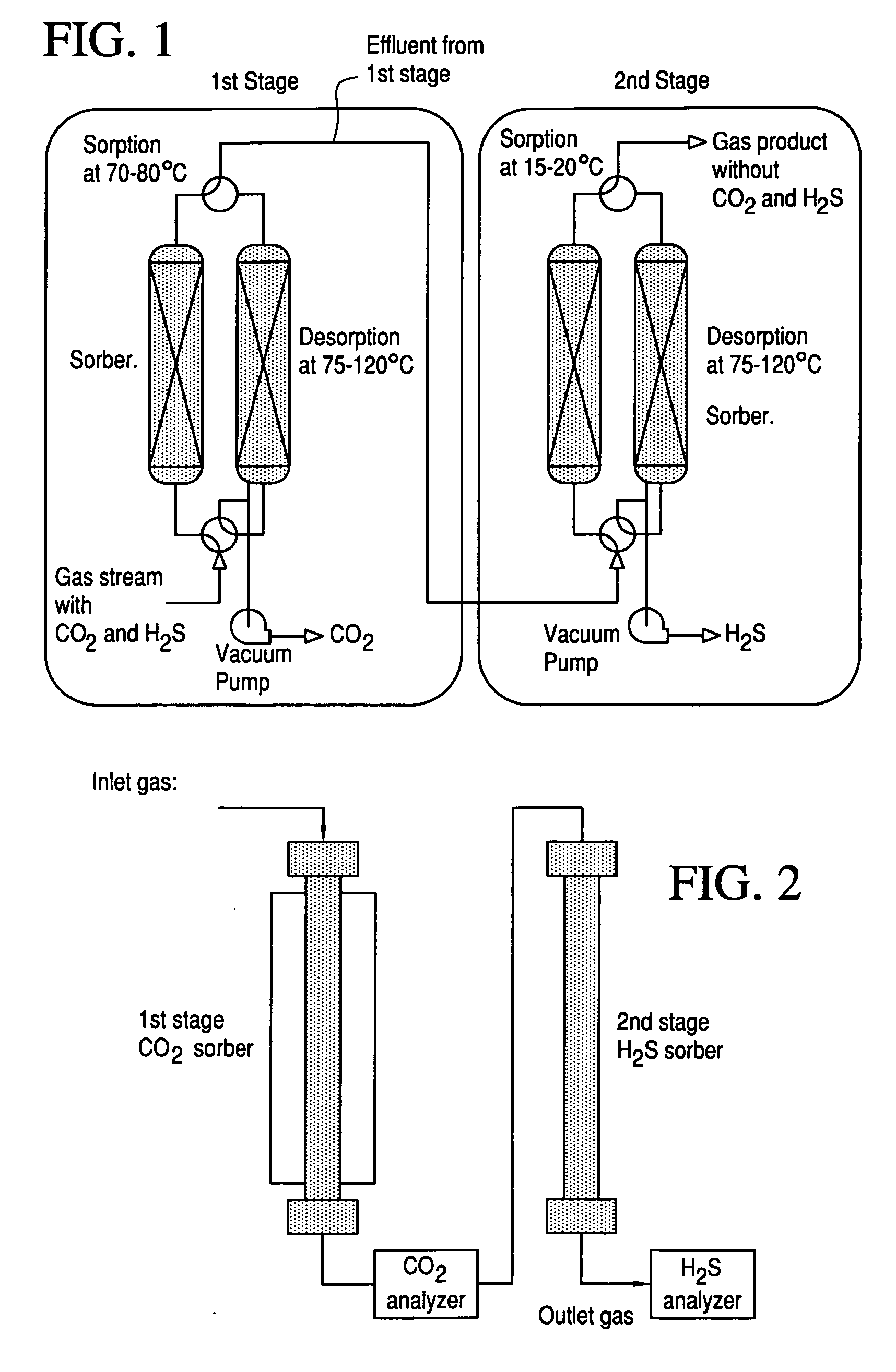Sulfur-tolerant and carbon-resistant catalysts
a catalyst and sulfur-tolerant technology, applied in the direction of metal/metal-oxide/metal-hydroxide catalysts, physical/chemical process catalysts, bulk chemical production, etc., can solve the problems of inefficient production and storage of hydrogen, the limitation of commercial adoption of hydrogen-based fuel cells, etc., and achieve high sulfur tolerance and carbon resistance. , the effect of high catalytic activity
- Summary
- Abstract
- Description
- Claims
- Application Information
AI Technical Summary
Benefits of technology
Problems solved by technology
Method used
Image
Examples
example 1
[0016]2% Rh-2% Ni-96% CeO2Al2O3 Where All Amounts are Based on the Total Weight of the Catalyst
[0017]Aqueous slurry of gamma alumina is formed by adding 20 ml deionized water to 15 gm of UOP VGL-15 gamma alumina supplied by UOP Company. 10 ml of aqueous Ce nitrate solution formed by mixing 10 ml water and 9.46 gm Ce nitrate (Cerium (III) nitrate hexahydrate, 99.99% Aldrich) is added at the rate of 1 drop per sec with a pipette to 35 gm of aqueous slurry of UOP VGL-15 gamma alumina to form a treated slurry. The treated slurry is stirred at 65° C. to evaporate excess water and the resulting powder is dried under vacuum at 120° C. for 12 hours. The resulting dried support material is placed in a ceramic crucible and calcined in a muffle furnace under an air flow of 70 cc / min to produce CeO2Al2O3 support material. During calcination the support material is heated at 1° C. / min to 600° C. and held at 600° C. for 6 hrs. The furnace then is turned off and allowed to cool naturally to room t...
example 2
[0018]2% Rh-5% Ni-93% CeO2A2O3 Where All Amounts are Based on the Total Weight of the Catalyst
[0019]The method of example 1 is employed except that 10 ml of catalyst metal nitrate solution formed by mixing 10 ml deionized water, 1.032 gm Rh nitrate and 1.29 gm Ni nitrate is added to the 14.8 gm of CeO2Al2O3 slurry.
example 3
[0020]2% Rh-10% Ni-88% CeO2Al2O3 Where All Amounts are Based on the Total Weight of the Catalyst
[0021]The method of example 1 is employed except that 15 ml of catalyst metal nitrate solution formed by mixing 15 ml deionized water, 1.091 gram Rh nitrate and 2.73 gm Ni nitrate is added to the 14.8 gm of CeO2Al2O3 slurry.
PUM
| Property | Measurement | Unit |
|---|---|---|
| temperatures | aaaaa | aaaaa |
| temperature | aaaaa | aaaaa |
| temperature | aaaaa | aaaaa |
Abstract
Description
Claims
Application Information
 Login to View More
Login to View More - R&D
- Intellectual Property
- Life Sciences
- Materials
- Tech Scout
- Unparalleled Data Quality
- Higher Quality Content
- 60% Fewer Hallucinations
Browse by: Latest US Patents, China's latest patents, Technical Efficacy Thesaurus, Application Domain, Technology Topic, Popular Technical Reports.
© 2025 PatSnap. All rights reserved.Legal|Privacy policy|Modern Slavery Act Transparency Statement|Sitemap|About US| Contact US: help@patsnap.com


